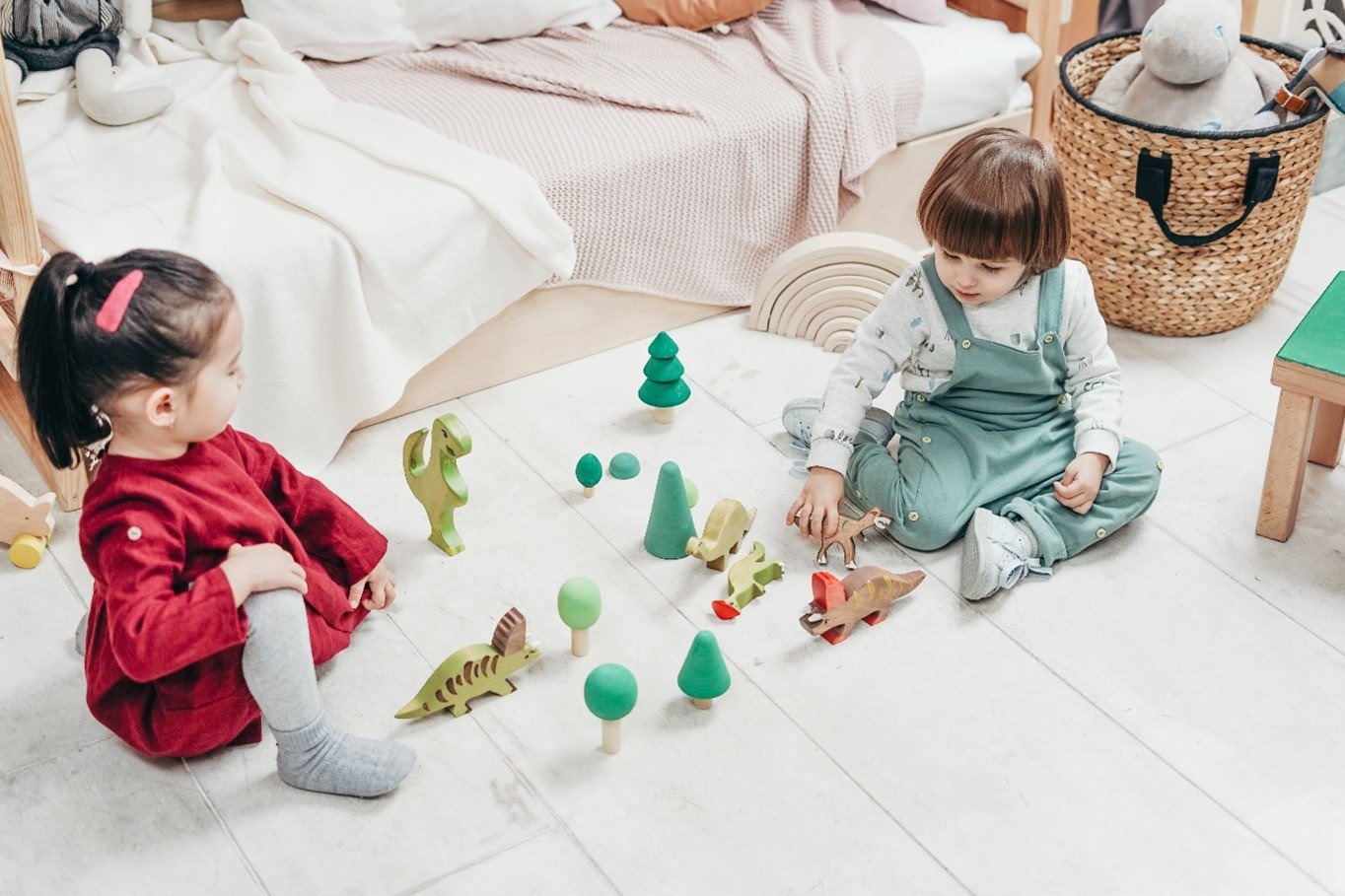6 Stages of Social Play
Written by: Rebecca Smith, MACP, Registered Psychologist, Counsellor, Family Ties Association
If you’ve been looking around the Building Brains website, you may have noticed there is a huge focus on children’s play and the benefits it has on their young mind. Playing is not only fun for children (and adults), but it also helps their young mind develop so many essential skills. As noted in previous blogs, play helps children develop social skills, problem solving skills, emotional skills, physical skills, cognitive skills and so much more.
In this post we will dig deeper to explore how social play develops within the first five years of a child’s life. We are going to take a look at one leading researcher and advocate on this subject - Mildred Parten (1932). Her work demonstrated that there are generally six play stages a child goes through which mirror their social development from birth to around age 5.
Disclaimer - it is important to note that children develop at their own pace; some children may go through each stage faster or slower than the ‘suggested’ age range and that is okay!
1. Unoccupied Play (Birth – 3 months)
During this stage, it can be hard to tell that an infant is gearing up to play and is actually playing. Infants play starts off as randomly moving their bodies, making sounds, and observing their surroundings. They are experiencing and playing with the world through their senses. Parents don’t need to do anything specific to foster this type of play; just allow your infant to wiggle their small hands and feet, move their arms, and take in their new surroundings.
2. Solitary Play (Birth – 2 years)
This stage is all about children playing alone and not interacting with others; children enjoy their time alone and are not interested in playing with others quite yet. Through play alone, children are learning how to keep themselves entertained, master fine and large motor skills, and gain a sense of independence; all important skills to have going forward. To help with this stage, parents can have toys such as blocks, books, stuffed animals, and sensory items available for children to explore. Even though children are playing alone, parents can be close by to provide security and a safe environment for their children. As children gets older, they may continue with solitary play as a way to explore and strengthen their own interests.
3. Onlooker Play (2 years)
As the name suggests, children in this stage simply observe other children or adults and don’t partake in the play themselves. Children may mimic or copy certain aspects of play they see, but they don’t tend to engage with others. During this stage, children are learning the framework of play, how to interact with others, and gaining a sense of confidence to participate in play soon.
4. Parallel Play (2 – 3 years)
During this stage, children continue to play on their own, but are now playing beside other children and may be using the same toys as them. Playing beside other children can spark new ideas about how to play with a toy and builds up that skill to connect with others when they are ready. Parents can help with parallel play by setting up play dates with similar aged children and resist the urge to “make” children play with each other (children are playing through the close proximity to other children).
5. Associative Play (3 – 4 years)
This is when children start to learn how to play with others, share toys with others, and create play scenes along side each other. Children tend to engage in a shared activity (such as using building block), but are likely not working towards a shared purpose at this stage (one might be building a castle and the other is building a house). Important skills learned at this stage are figuring out how to take turns, problem-solve, cooperate, and new language skills.
6. Social/Cooperative Play (4 – 5 years)
Cooperative play is the final stage where all the skills used within the first five stages have led up to this big moment; children engaging in play with other children. Children generally play in groups, create play scenes together with a common purpose, and begin to make friendships. Within this stage, you may be surprised to know that it is common for children to have increased conflict and disagreement; this is where those problem-solving skills get tested. Parents can help children play within this stage by providing games with rules, turn-taking, and lots of communication/feedback.
So next time you are with a group of children, have fun taking a guess at which stage they are in and what skills they are practicing.
References
Gudritz, L. (2016, June 20). 6 Types of Play Important to Your Child's Development. Retrieved from https://www.healthline.com/health/parenting/types-of-play
Parten, M (1932). "Social participation among preschool children". Journal of Abnormal and Social Psychology 28 (3): 136–147.
Rymanowicz, K. (2015, October 6). The Power of Play – Part 1: Stages of Play. Retrieved from https://www.canr.msu.edu/news/the_power_of_play_part_1_stages_of_play
Picture: Children Playing Wooden Toys · Free Stock Photo (pexels.com)
